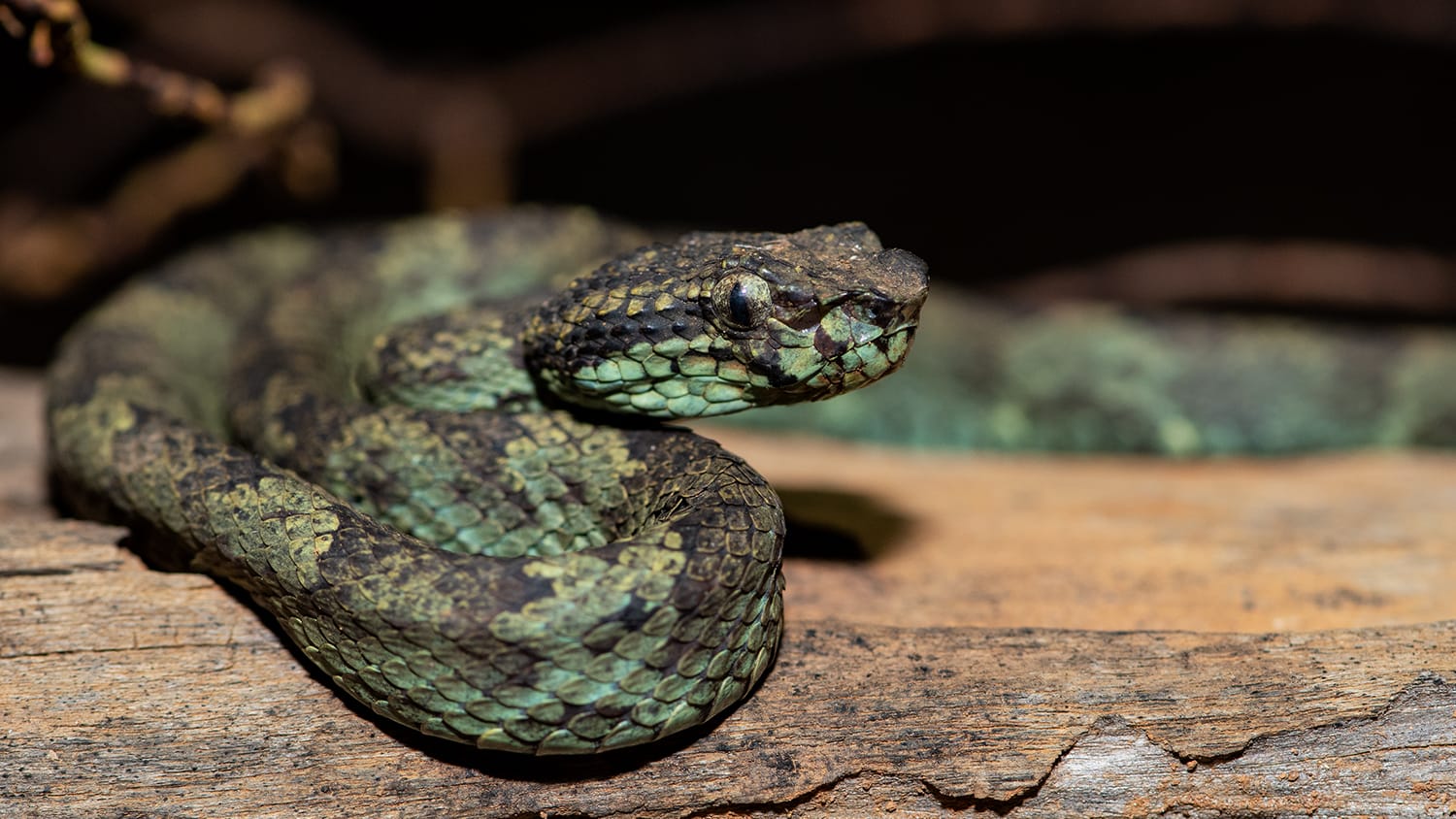
Malabar Pit Viper, also known as Trimeresurus malabaricus, is a fascinating species of snake found in the Western Ghats of India. Known for its vibrant colors and venomous bite, this snake has captured the curiosity of researchers and nature enthusiasts alike. In this article, we are going to delve into 16 unbelievable facts about the Malabar Pit Viper that will leave you in awe of its unique characteristics and adaptations. From its remarkable hunting techniques to its ability to change colors, you will discover the incredible world of this mesmerizing snake. So, buckle up and prepare to be amazed by these intriguing facts about the Malabar Pit Viper!
Key Takeaways:
- The Malabar Pit Viper is a colorful, deadly, and stealthy snake found in the forests of India, with unique hunting techniques and fascinating parental care behaviors.
- These vipers are masters of camouflage, striking at night with their potent venom, and playing a special role in Indian folklore and culture.
Its Unique Coloring
The Malabar Pit Viper exhibits a remarkable array of colors, ranging from vibrant greens to stunning shades of yellow and red. This exceptional coloration helps it blend seamlessly into its forest habitat, making it a master of camouflage.
Deadly Venom
The venom of the Malabar Pit Viper is highly potent and considered to be one of the most toxic among all venomous snakes. Its venom contains a combination of neurotoxins and hemotoxins, which can cause severe damage to the nervous system and blood cells of its prey.
Efficient Hunters
These vipers are ambush predators, patiently waiting for unsuspecting prey to pass by. Once within striking distance, they strike with incredible speed, delivering a swift and lethal bite.
Arboreal Lifestyle
Malabar Pit Vipers are highly adapted to arboreal life, spending a majority of their time in tree canopies. Their prehensile tails and strong muscular bodies allow them to navigate through branches with ease, making them formidable tree-dwelling predators.
Unique Fang Structure
The Malabar Pit Viper possesses long, hollow fangs that are capable of retracting when not in use. This adaptation helps to prevent self-inflicted injury while moving through dense vegetation or swallowing large prey.
Binocular Vision
Unlike many other snake species, the Malabar Pit Viper has binocular vision, which allows it to accurately judge depth and distance. This characteristic is particularly useful when striking at fast-moving prey.
Live Birth
These vipers are ovoviviparous, meaning they give birth to live young rather than laying eggs. The female vipers carry their developing embryos internally until they are fully developed, then give birth to live offspring.
Range and Habitat
The Malabar Pit Viper is found in the Western Ghats of India, specifically in the states of Kerala and Karnataka. They prefer dense forests and montane regions, where they can find abundant prey and suitable shelter.
Protecting their Young
Male Malabar Pit Vipers have been observed guarding their offspring after birth, showing remarkable parental care. This behavior is uncommon among snakes and highlights the unique characteristics of this species.
Stealthy Movements
Due to their excellent camouflage and slow, deliberate movements, Malabar Pit Vipers are often difficult to detect. This makes them elusive and increases their chances of surprise attacks on unsuspecting prey.
Nocturnal Predators
Being primarily nocturnal, Malabar Pit Vipers are most active during the night. Their heat-sensing pits enable them to locate warm-blooded prey in the darkness, making them highly efficient hunters under cover of night.
Conservation Status
The Malabar Pit Viper is currently classified as a species of least concern by the International Union for Conservation of Nature (IUCN). However, habitat loss and fragmentation threaten their population in certain areas.
Defensive Behavior
When threatened, Malabar Pit Vipers adopt an intimidating defensive posture. They may coil their bodies, flatten their heads, and hiss loudly to ward off potential predators.
Feeding Habits
Malabar Pit Vipers primarily feed on small mammals, such as rodents, as well as birds and lizards. With their venomous bite, they quickly immobilize their prey before swallowing it whole.
Species Diversity
The Malabar Pit Viper belongs to the genus Trimeresurus, which comprises numerous species found across Asia. Each species has its own unique characteristics, contributing to the overall diversity of these fascinating snakes.
Cultural Significance
In certain Indian cultures, the Malabar Pit Viper holds symbolic value and is associated with mythological stories. Its striking appearance and potentially dangerous nature have led to its inclusion in folklore and traditional beliefs.
Conclusion
The Malabar Pit Viper is a truly fascinating creature, with its unique characteristics and behaviors. From its striking coloration to its venomous bite, this snake has captured the attention of many animal enthusiasts. Whether it’s camouflaging in the dense forests of the Western Ghats or showcasing its incredible climbing abilities, this viper never fails to amaze.
By learning about the 16 unbelievable facts about the Malabar Pit Viper, we gain a deeper understanding of this incredible reptile. Its ability to sense infrared radiation, its role in the local ecosystem as a predator, and its adaptation to different habitats highlight the complexity of nature’s designs.
As the Malabar Pit Viper continues to thrive in its natural habitat, it’s important for us to appreciate and respect these remarkable creatures. By raising awareness and promoting conservation efforts, we can ensure that future generations will also have the opportunity to marvel at the wonders of the animal kingdom.
FAQs
1. Where can the Malabar Pit Viper be found?
The Malabar Pit Viper is native to the Western Ghats region of India. It can be found in the states of Goa, Karnataka, Kerala, Maharashtra, and Tamil Nadu.
2. Is the Malabar Pit Viper venomous?
Yes, the Malabar Pit Viper is venomous. Its venom is primarily used for subduing its prey. However, it is not considered to be highly dangerous to humans, and bites are rare.
3. What is the diet of the Malabar Pit Viper?
The Malabar Pit Viper mainly preys on small mammals, birds, frogs, and lizards. It is an ambush predator and relies on its camouflaged coloration to surprise its prey.
4. How does the Malabar Pit Viper reproduce?
Female Malabar Pit Vipers give birth to live young, as opposed to laying eggs. They typically produce a litter of around 8-12 offspring.
5. Can the Malabar Pit Viper be kept as a pet?
Keeping the Malabar Pit Viper as a pet is not recommended. They are venomous snakes and require specific care and handling expertise. It is best to appreciate them in their natural habitat or in a controlled environment, such as a reputable zoo.
Was this page helpful?
Our commitment to delivering trustworthy and engaging content is at the heart of what we do. Each fact on our site is contributed by real users like you, bringing a wealth of diverse insights and information. To ensure the highest standards of accuracy and reliability, our dedicated editors meticulously review each submission. This process guarantees that the facts we share are not only fascinating but also credible. Trust in our commitment to quality and authenticity as you explore and learn with us.


